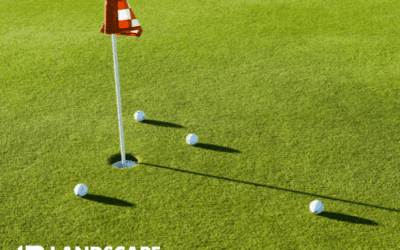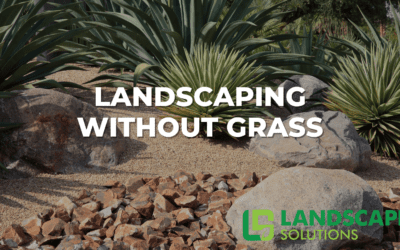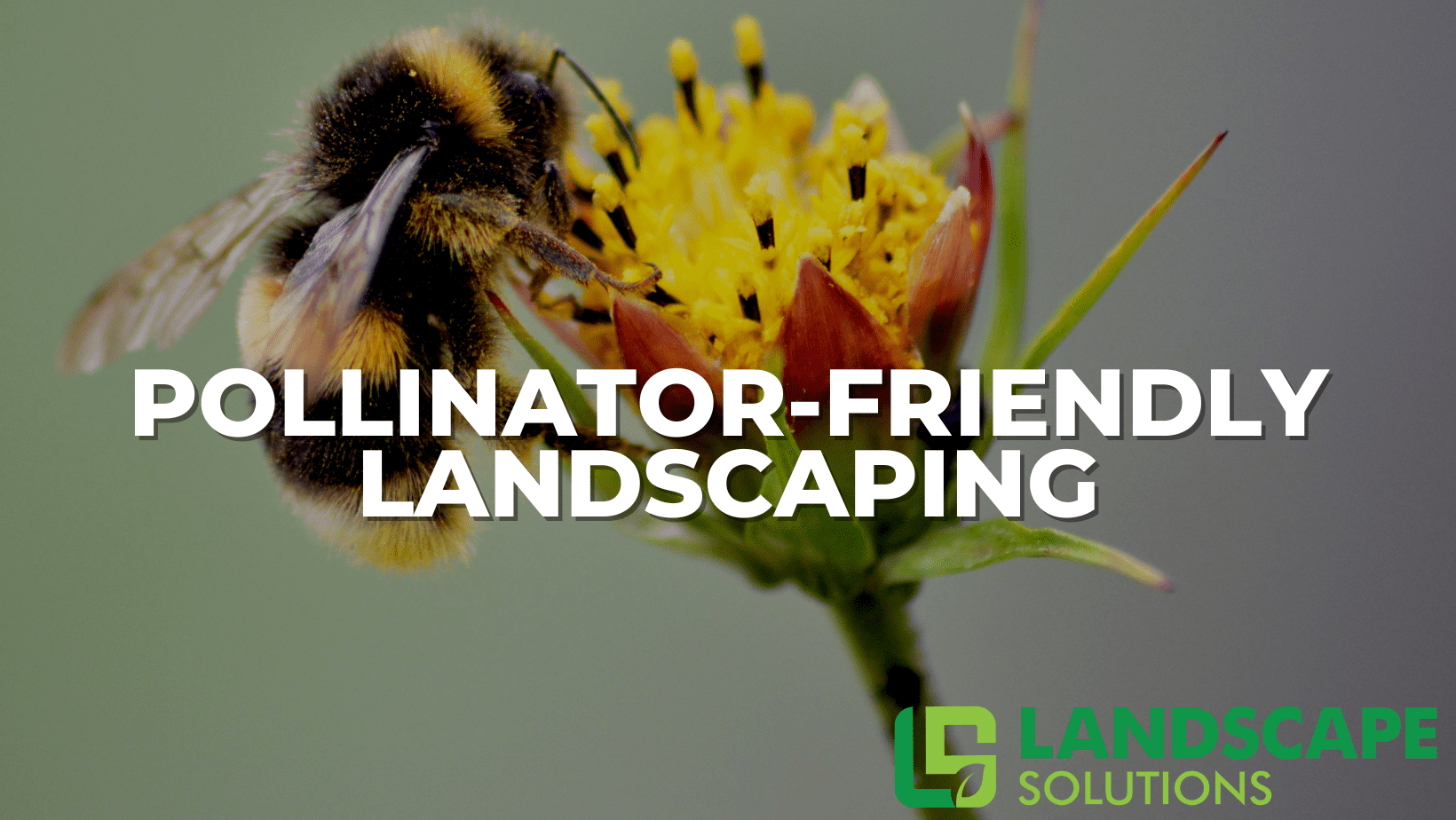Pollinator-friendly landscaping is an essential element of sustainable garden design. As pollinators—such as bees, butterflies, and certain bird species—play a critical role in plant reproduction, their presence ensures that gardens flourish season after season. In recent years, there has been growing awareness of the importance of fostering environments that attract and support pollinators. Integrating pollinator-friendly landscapes into residential and commercial properties not only enhances aesthetic appeal but also promotes biodiversity, resilience, and ecological balance.
Why Pollinators Matter
Pollinators are integral to a thriving ecosystem. When bees, butterflies, and birds transfer pollen from one flower to another, they enable plants to produce seeds, fruits, and vegetables. Without these creatures, many food crops and ornamental plants would fail to reproduce. This would lead to reduced harvests, fewer flowering plants, and a decline in the overall quality of green spaces.
By creating a hospitable environment for pollinators, landscapes become more self-sustaining. Flowers bloom in greater abundance, trees and shrubs bear more fruit, and gardens remain vibrant. The presence of pollinators also supports local wildlife, as many insects serve as a food source for birds and other creatures. A pollinator-friendly landscape, therefore, contributes to a rich tapestry of life, ensuring that gardens remain dynamic and productive.
Selecting the Right Plants
The key to attracting pollinators lies in choosing the appropriate plant varieties. Certain flowers and shrubs provide nectar and pollen that are highly appealing to bees, butterflies, and hummingbirds. Native plants, in particular, are valuable because they are well-adapted to local soil and climate conditions. This ensures that the plants thrive with minimal maintenance, while pollinators find the resources they need.
A few examples of pollinator-friendly plants include:
- Milkweed: A crucial host plant for monarch butterflies, milkweed provides both nectar and a place for monarch larvae to feed. This vibrant plant adds color and movement to the garden, supporting the monarch’s life cycle.
- Lavender: Known for its fragrant purple blooms, lavender attracts bees and butterflies while adding a soothing aroma to outdoor spaces. Its drought-tolerant nature makes it a sustainable choice for many regions.
- Sunflowers: With their bright, cheerful faces and abundant pollen, sunflowers serve as a magnet for bees. These tall, bold blooms make a statement in any garden and produce seeds that birds relish.
Selecting a diverse range of plants that bloom at different times of the year ensures that pollinators have a continuous food supply. Early spring blooms feed bees emerging from hibernation, while late summer and autumn flowers help sustain pollinators preparing for cooler weather.
Creating Pollinator Pathways with Native Vegetation
Establishing pollinator pathways involves planting strips or clusters of native flowers, shrubs, and grasses that serve as “rest stops” for pollinators traveling through an area. By connecting habitats in a corridor-like fashion, pollinators can safely move from one feeding ground to another. These pathways are particularly important in urban or suburban environments, where natural habitats may be fragmented.
Strategic placement of native plants along property borders or interspersed throughout the landscape can create a network of feeding stations. This not only benefits pollinators, but also enriches visual interest. The variety of textures, colors, and plant heights adds depth and character to the garden.
Utilizing Water Features and Shade
Pollinators also require water and shelter to survive. Adding a small water feature, such as a shallow birdbath or a stone basin, can provide insects and birds with a place to drink. Ensure the water source includes stones or pebbles where insects can land and safely access water without risk of drowning.
Shade is another critical element, as not all pollinators thrive in intense, direct sunlight. Planting trees or installing structures like pergolas can create gentle shade and cooler microclimates within the garden. Shade-loving flowers and ferns can fill these areas, contributing additional layers of habitat diversity.
Reducing Pesticides and Adopting Organic Practices
Conventional landscaping often relies on chemical fertilizers and pesticides to control pests and enhance growth. However, these substances can harm pollinators, either by directly poisoning them or by contaminating their food sources. A more sustainable approach involves reducing or eliminating the use of synthetic chemicals.
Organic gardening practices, such as composting, crop rotation, and encouraging beneficial insects, help maintain soil health and prevent pest outbreaks naturally. By avoiding harsh chemicals, pollinators can feed and breed without interference, ultimately leading to more robust plant growth and greater garden resilience.
Designing for Year-Round Interest
Pollinator-friendly landscapes need not be limited to the warm months. By choosing plants that bloom at different times of the year, as well as including evergreens, ornamental grasses, and seed-bearing flowers, a garden can maintain its appeal even when not in full bloom. Dried seed heads in winter or early-blooming shrubs in spring keep pollinators engaged and ensure that the garden remains vibrant.
In colder climates, select hardy native plants and shrubs that provide shelter from the elements. Nesting boxes, brush piles, and leaf litter left intact over winter also offer hiding places for overwintering insects and birds.
The Benefits Extend Beyond Pollinators
Adopting a pollinator-friendly landscape does more than support bees, butterflies, and birds. It also creates a sustainable, low-maintenance environment that relies less on chemical inputs and excessive watering. Healthy pollinator populations lead to stronger, more productive plants, meaning a garden that all can enjoy—humans and wildlife alike.
Additionally, a pollinator-friendly landscape can increase property value. Vibrant blooms, lush foliage, and harmonious design elements all contribute to curb appeal. These landscapes also serve as educational spaces, demonstrating the importance of ecological stewardship and nurturing a sense of connection with nature.
Partnering with Landscape Professionals
Creating a pollinator-friendly landscape involves selecting the right plants, understanding local soil conditions, and maintaining a balance between aesthetics and ecological function. Professional landscape designers and installers are well-equipped to guide these efforts, ensuring that each element of the outdoor space serves its purpose while maintaining visual unity.
By working with experts, homeowners and property managers can enjoy a garden that is both beautiful and ecologically responsible. These professionals can recommend native plant varieties suited to local conditions, design pollinator pathways, and integrate water features, seating areas, and other architectural elements that complement the overall vision.
Call to Action
For a pollinator-friendly garden tailored to local ecosystems and designed with sustainability in mind, consider contacting Landscape Solutions. With extensive experience in creating ecologically balanced outdoor spaces, the team can transform your property into a haven for pollinators and a source of year-round enjoyment.
Call (615) 852-5009 or visit www.landscapetn.com to schedule a consultation. Create a lasting, vibrant, and sustainable landscape that supports pollinators, enhances biodiversity, and enriches the environment.




